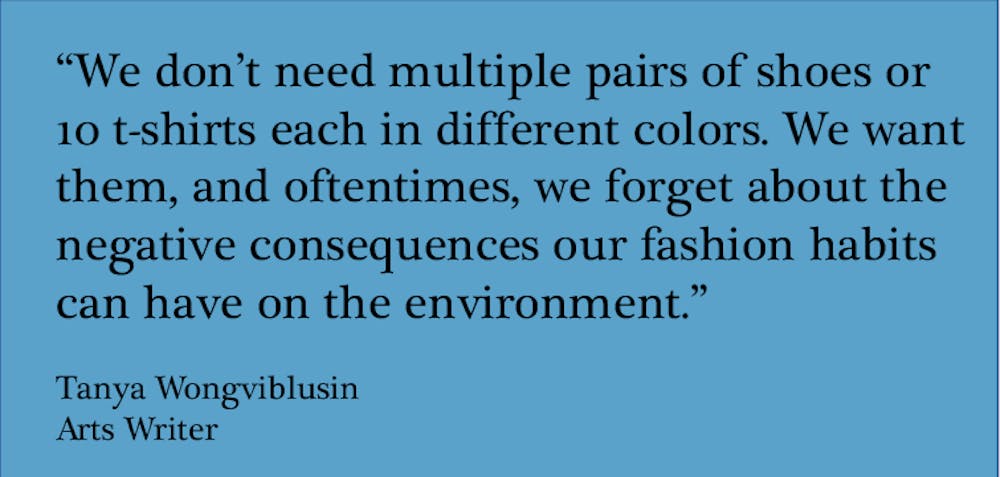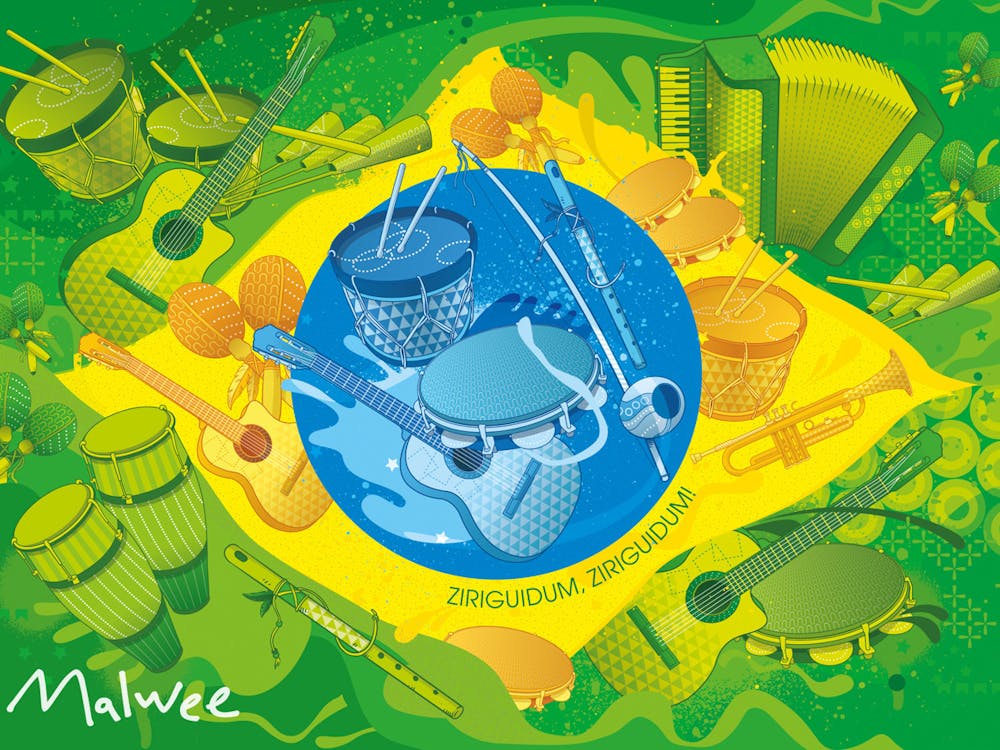Do you buy clothes that you know you’ll throw away after a year or so? How many clothes in your closet do you actually wear? If you are like me and many other college students, through contemplating these questions you’ll quickly realize that you are participating in fast fashion, a habit that hurts both your wallet and the environment.
It is undeniable that fashion feeds off of our consumerist desires. We don’t need multiple pairs of shoes or 10 t-shirts each in different colors. We want them, and oftentimes, we forget about the negative consequences our fashion habits can have on the environment.
Just because we aren’t thinking about the repercussions of our actions doesn’t mean that they aren’t having real, detrimental effects every day.
Currently, fashion is only behind oil as the most polluting industry in the world, according to an article in the Huffington Post. This is perhaps a signal that now is the time for us to look in the mirror and reflect upon how we can change this striking reality.
Luckily, there are ways to be both fashionable and sustainable — one of the main takeaways of Planet Runway, an event hosted by Students for Environmental Action last Saturday.
Junior Clarissa Chen, the co-lead of Planet Runway’s planning committee, said that the event was meant to show students ways to approach fashion more sustainably.
“I think having a fashion show where we show many different ways in which you can think about environmentalism when you think about your fashion choices demonstrates that there’s a lot of creative solutions around dressing sustainably and also looking great while doing it,” Chen said.
The event started off with an exciting fashion show by student designers who all sourced and constructed their pieces in a sustainable manner.
Senior Rachel Krieger refashioned her collection of free Hopkins t-shirts into a wrap skirt and top. Junior Tracy Gao made an elegant white and blue tube top and cape with a traditional Chinese dress along with other thrifted materials. Sophomore Ally Hardebeck added personal touches to a thrifted denim jacket and Converse with embroideries and paintings.
Not only did the fashion show showcase different creative approaches to sustainable fashion, it also embraced diversity with the inclusion of student models of various body types and ethnicities. This is a commendable decision, one that is starting to become more common in the fashion industry.
At the end of the fashion show, attendees enjoyed delicious hors d’oeuvres while waiting for the event-wide clothing swap. Everyone in the event had to bring a piece of gently used clothing for admission.
These clothes were then organized on racks and tables to create a “free store” where people could choose whatever they wanted and take it free of charge.
The idea behind the creation of the free store was to serve as a great way to recycle clothes among different people. After all, one person’s spring cleaning rejects might be exactly what another person has been looking for.
Chen believes that the free store will directly engage students with sustainable fashion.
She also hopes that Planet Runway will inspire students to participate in sustainable fashion not because it is a trendy thing to do, but because it is something that they should engage with on a moral level. Ideally, students will even be inspired to adapt their purchasing practices.
“The idea behind sustainable fashion is not participating in that wasteful cycle, which is very easy to do in a consumerist society,” Chen said. “But rather [it’s] looking to the resources that we’ve already used and creative new ways to change them into something new. Even if it’s not new in the world, it’s new to you. And you can change that and make something special.”
Planet Runway showed me that participating in sustainable fashion isn’t difficult. According to the small information booklet given upon entering the event, “sustainable fashion is everywhere — any way we can creatively reuse old clothes, weave sustainable fabrics, or reduce our fast fashion purchases.”
As someone who loves fashion, this event redefined my view of sustainable fashion and encouraged me to reflect upon my own purchasing habits.
I would also like to give a shout out to all the student designers, models and organizers who put immense amounts of work and time into making this wonderful event come to life.
It is a unique, creative event for the Hopkins community that, if they reacted anything like myself, helped raise the consciousness of my fellow attendees.























Please note All comments are eligible for publication in The News-Letter.